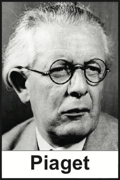Rascals case in brief
In the beginning, in 1989, more than 90 children at the Little Rascals Day Care Center in Edenton, North Carolina, accused a total of 20 adults with 429 instances of sexual abuse over a three-year period. It may have all begun with one parent’s complaint about punishment given her child.
Among the alleged perpetrators: the sheriff and mayor. But prosecutors would charge only Robin Byrum, Darlene Harris, Elizabeth “Betsy” Kelly, Robert “Bob” Kelly, Willard Scott Privott, Shelley Stone and Dawn Wilson – the Edenton 7.
Along with sodomy and beatings, allegations included a baby killed with a handgun, a child being hung upside down from a tree and being set on fire and countless other fantastic incidents involving spaceships, hot air balloons, pirate ships and trained sharks.
By the time prosecutors dropped the last charges in 1997, Little Rascals had become North Carolina’s longest and most costly criminal trial. Prosecutors kept defendants jailed in hopes at least one would turn against their supposed co-conspirators. Remarkably, none did. Another shameful record: Five defendants had to wait longer to face their accusers in court than anyone else in North Carolina history.
Between 1991 and 1997, Ofra Bikel produced three extraordinary episodes on the Little Rascals case for the PBS series “Frontline.” Although “Innocence Lost” did not deter prosecutors, it exposed their tactics and fostered nationwide skepticism and dismay.
With each passing year, the absurdity of the Little Rascals charges has become more obvious. But no admission of error has ever come from prosecutors, police, interviewers or parents. This site is devoted to the issues raised by this case.
On Facebook
Click for earlier Facebook posts archived on this site
Click to go to
Today’s random selection from the Little Rascals Day Care archives….
Click for earlier Facebook posts archived on this site
Click to go to
Today’s random selection from the Little Rascals Day Care archives….
Abuse primer was big seller for county
Oct. 24, 2012
“Indeed, at a time when the (Los Angeles County) Board of Supervisors has been meeting just five floors below the (Ritual Abuse) task force to dismantle county health care programs, lay off part-time employees and cut all other services because of a severe budget shortfall, some are questioning whether the group – and particularly its obsession with poisoning – is not just a little frivolous.
“One county employee suggested that the task force has not been disbanded because it is ‘one of the few that actually make money.’ Since 1989, the task force – made up of therapists, alleged victims and religious leaders – has sold a handbook that outlines the telltale signs of ritual abuse. More than 17,000 copies of the handbook have been sold at $1 apiece, more than enough to offset the costs of the task force.”
– From the Los Angeles Times, December 1, 1992
Early on, the task force handbook –“Ritual Abuse: Definitions, Glossary and the Use of Mind Control” – played a significant role in inflaming fear of ritual abuse.
By 1992, however, the last charges in the McMartin case had been dropped, and skepticism about ritual abuse was finding its voice. (But not among Little Rascals prosecutors – Bob Kelly had just been convicted and Dawn Wilson was being tried.)
Today the Los Angeles County Commission for Women website makes no mention of its onetime task force.
Piaget experienced reality of false memory
 Jan. 4, 2013
Jan. 4, 2013
“Psychologist Jean Piaget reported that his earliest memory was of his nurse defending him against a potential kidnapper at age two. He distinctly recalled sitting frightened in the baby carriage while the nurse fought off the man (incurring a scratch on her face in the process), and the police officer chasing away the kidnapper with his short white baton. Piaget was even able to describe the officer’s uniform in detail. His family, relieved that the nurse had prevented his kidnapping, rewarded her with a gold watch.
“Thirteen years later, the nurse returned the gold watch to the family accompanied by a letter confessing that she had made up the story because she wanted to raise the family’s opinion of her.
“Piaget used this false memory to emphasize the role of others’ influences on one’s memories. He noted that the nurse frequently had recounted the story in his presence, and others then had repeated the story in his hearing, thus creating the memories he had adopted as his own.
“Piaget noted that even in his old age those memories persisted as clear events, even though he knew them to be false.”
– From “The Encyclopedia of the Brain and Brain Disorders” by Carol Turkington and Joseph Harris (2009)
Given this phenomenon of memory, it’s hardly surprising that no child-witness against the Edenton Seven has stepped forward to publicly recant.
In 1993, predicting a historic marker – and more
 June 18, 2015
June 18, 2015
Given my thoroughly unsuccessful attempt to persuade the State of North Carolina to erect a historic marker recalling the Little Rascals Day Care case, I had to laugh at discovering this 1993 letter to the Elizabeth City Daily Advance:
“Dear Editor:
“The year is 2022. The town of Edenton, last stop on the witch-hunt trail beginning in Salem, Mass., with an intermediate stop at Joe McCarthy’s office in Washington, D.C., has finally decided to build a historic marker. (It will be) directly across the street from the town’s $4 million tour center, where people gather from across the nation (indeed, from around the world) to see and feel and learn about the Edenton witch hunts of 1990-1993….
“It is here where the walking tours start, where the T-shirts are sold and where the buses disgorge their curious cargo….”
Letter writer David W. Tucker of San Francisco – who in all likelihood had recently watched “Innocence Lost: The Verdict” – expressed confidence that the marker would eventually be approved, even if not by 2022:
“The only question is whether the marker will speak of the community’s collective shame
or, instead, of the individuals and groups of good will and courage who brought lasting honor to Edenton by rescuing Bob Kelly, Dawn Wilson, the Twiddy family and the others from the nightmare that fear, hate and ignorance visited upon them….”
Is Finkelhor now less panicked by day cares?

unh.edu
David Finkelhor
Feb. 3, 2016
“A new survey finds that adults at school, day care and organizations such as churches and scouting groups are less likely than relatives to abuse or mistreat children.
“In general, organizations that serve young people ‘do not look like particularly risky environments,’ said study co-author David Finkelhor, director of the University of New Hampshire’s Crimes Against Children Research Center. This contradicts perceptions by some people who ‘think these are magnets for molesters,’ he said.”
– From “Child Abuse at Daycare, Youth Groups Rarer Than Thought: Survey” by Randy Dotinga in the Northwest Indiana Times (Feb. 2)
Surprising to see Dr. Finkelhor dismiss the notion of day cares as “magnets for molesters,” given that his own overwrought “Nursery Crimes: Sexual Abuse in Day Care” (1988) was an influential text in spreading the moral panic.
How did he determine back then whether sexual abuse had actually occurred? “If at least one of the local investigating agencies had decided that abuse had occurred and that it had happened while the child was at a day-care facility….then we considered the case substantiated.” In other words, one supposed “red flag” sighting from Brenda Toppin was certification enough.
As recently as 2012, when I queried Dr. Finkelhor about his beliefs past and present, he denied being “an authority on the validity of claims” that he had laid out with such credulity in “Nursery Crimes.”
![]()











0 CommentsComment on Facebook